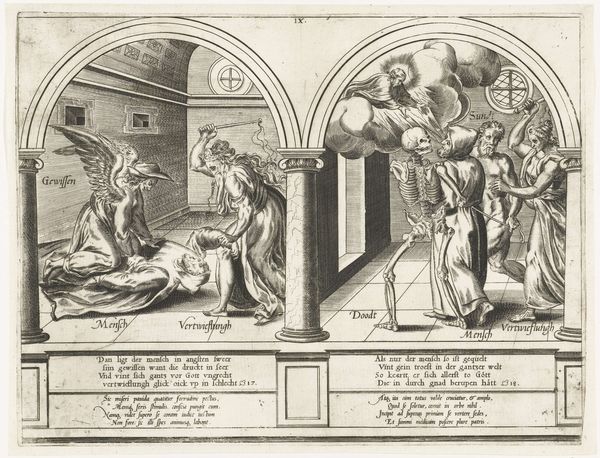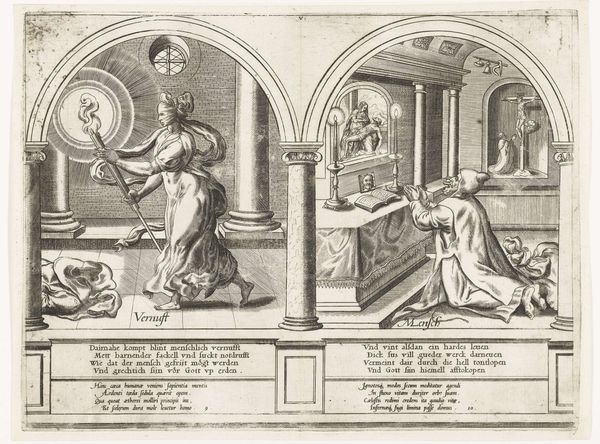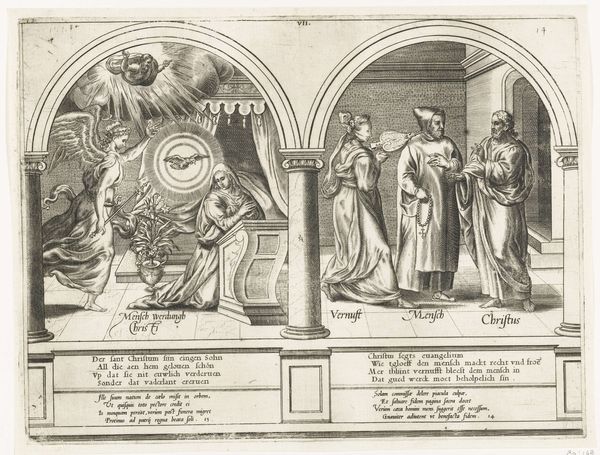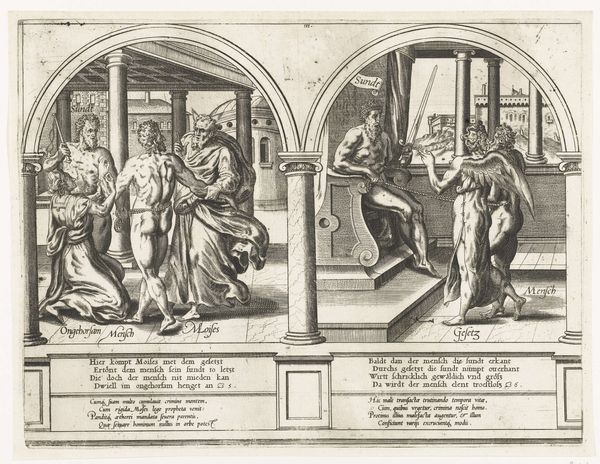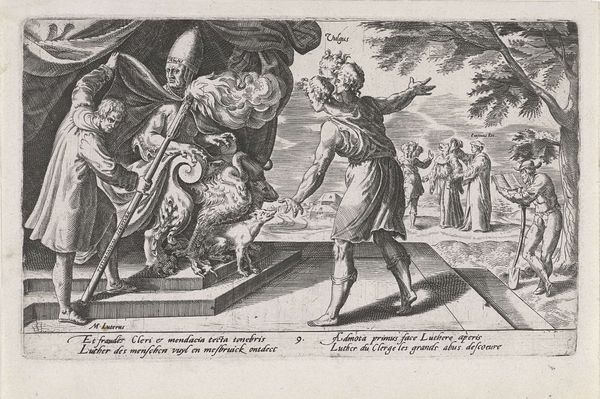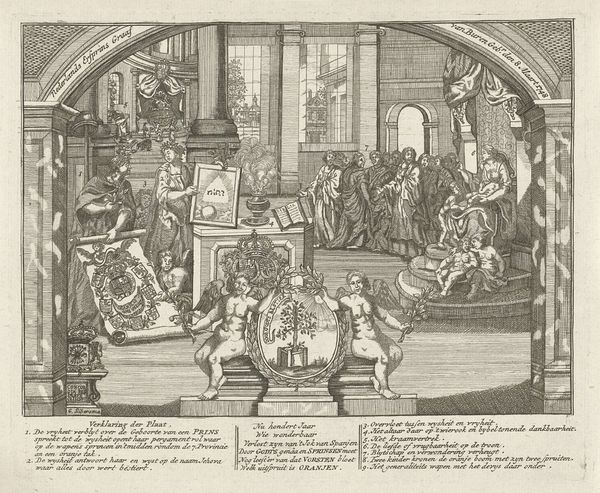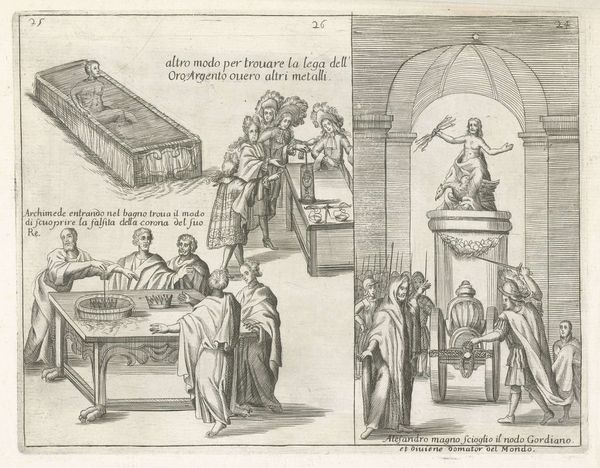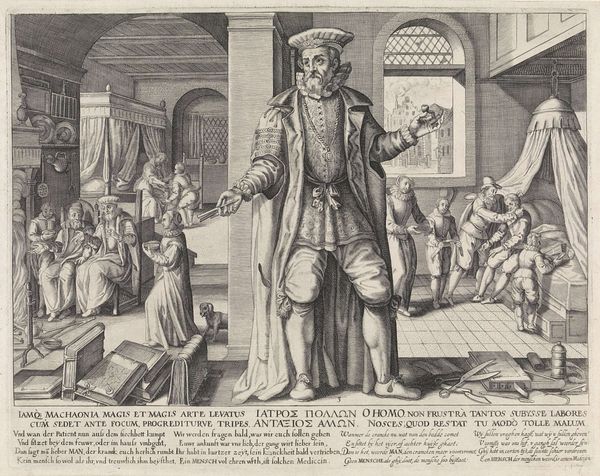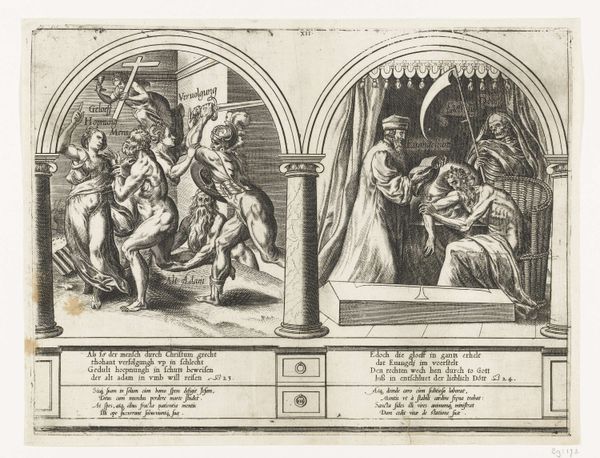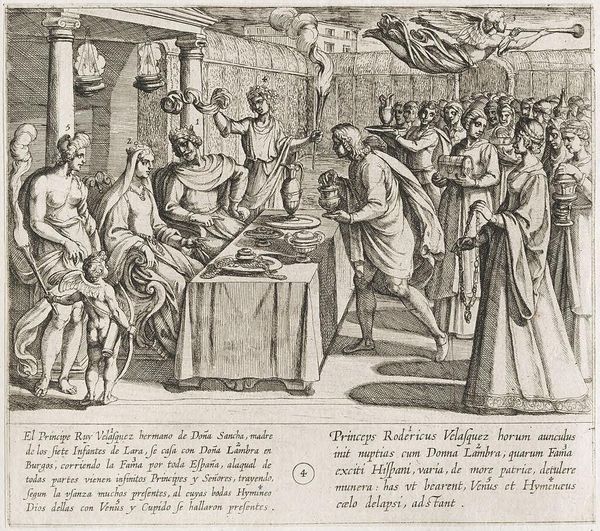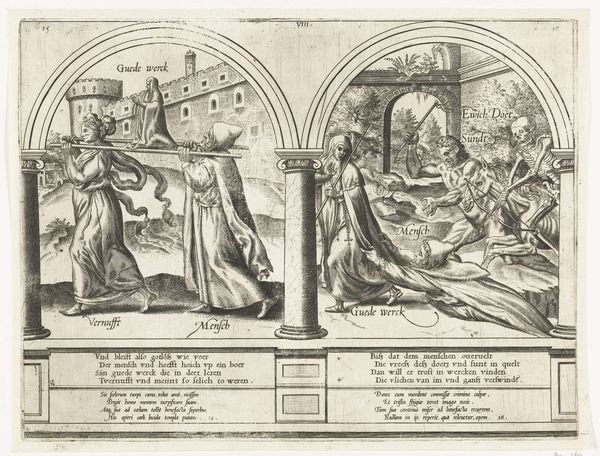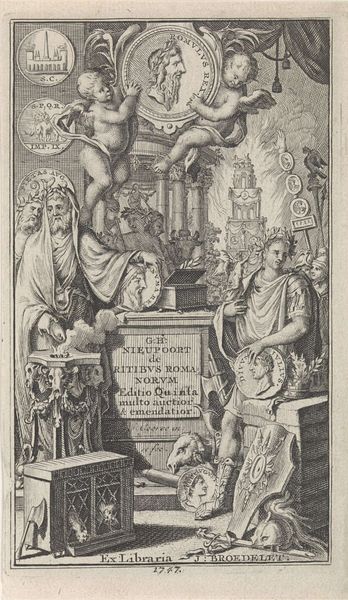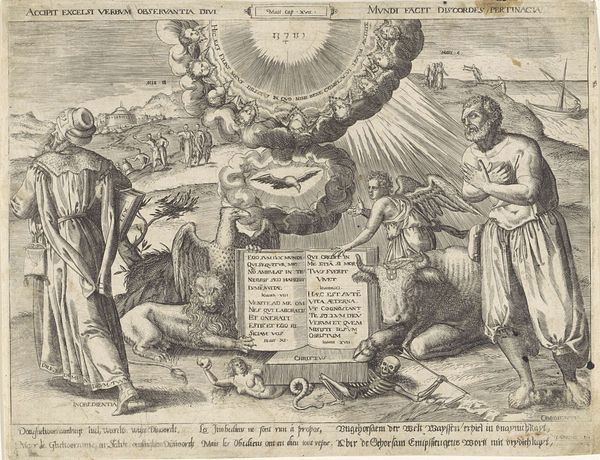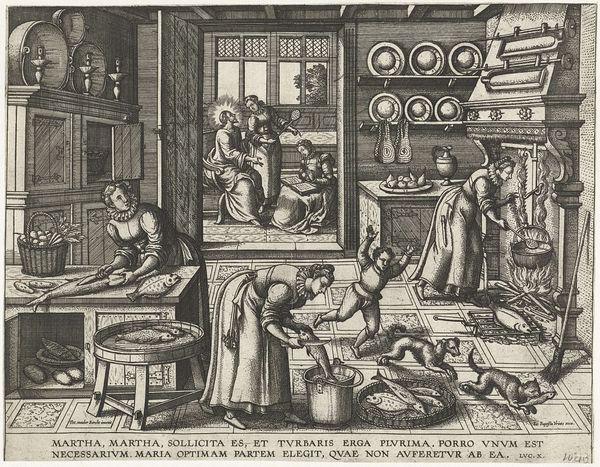
print, intaglio, engraving
#
medieval
#
allegory
# print
#
intaglio
#
figuration
#
line
#
engraving
Dimensions: height 274 mm, width 363 mm
Copyright: Rijks Museum: Open Domain
Editor: This is a striking engraving titled "De Mens bewondert zichzelf en is blind voor de Drie-eenheid," created between 1546 and 1562 by Frans Huys. The composition is split in two, with one side showing a man admiring himself in a mirror, and the other a man asleep while the Holy Trinity looms above. What are your initial thoughts on this work? Curator: Considering its historical context, I focus on the printmaking process itself. Look at the labor invested in the intricate lines of this intaglio engraving. Each mark meticulously carved into the plate signifies a deliberate act, a slow and considered means of production far removed from our current methods of image dissemination. Notice how the lines themselves create the tones and textures. How does the labor inherent in this type of printmaking shape its meaning for you? Editor: Well, knowing the process was so meticulous, I see the contrast between the two sides as even more potent. One side depicts vanity and the other, a chance at spiritual awakening, but one that requires abandoning that vanity. Curator: Exactly. The material act of creating this print—the time, skill, and expense involved—raises questions about the value system it represents. Is it critiquing the emerging materialism of the Renaissance, or is it simply reinforcing established religious doctrines? And what of its distribution? Who was consuming these images, and how did that influence the demand for more such prints? Editor: That's fascinating, framing the image not just as a religious statement, but as a product of its time, reflecting the social and economic forces at play. It really adds a layer of complexity to the viewing experience. Curator: Indeed. By examining the materiality of this engraving, the physical labor, the intended audience, we can begin to understand how such images were actively shaping the worldviews of their contemporary viewers, both influencing and influenced by prevailing cultural beliefs and emerging social changes. It goes far beyond simply illustrating a moral lesson. Editor: I see what you mean. Thank you, this has certainly made me appreciate the layers of meaning within this print beyond the initial, seemingly simple, allegory.
Comments
No comments
Be the first to comment and join the conversation on the ultimate creative platform.
